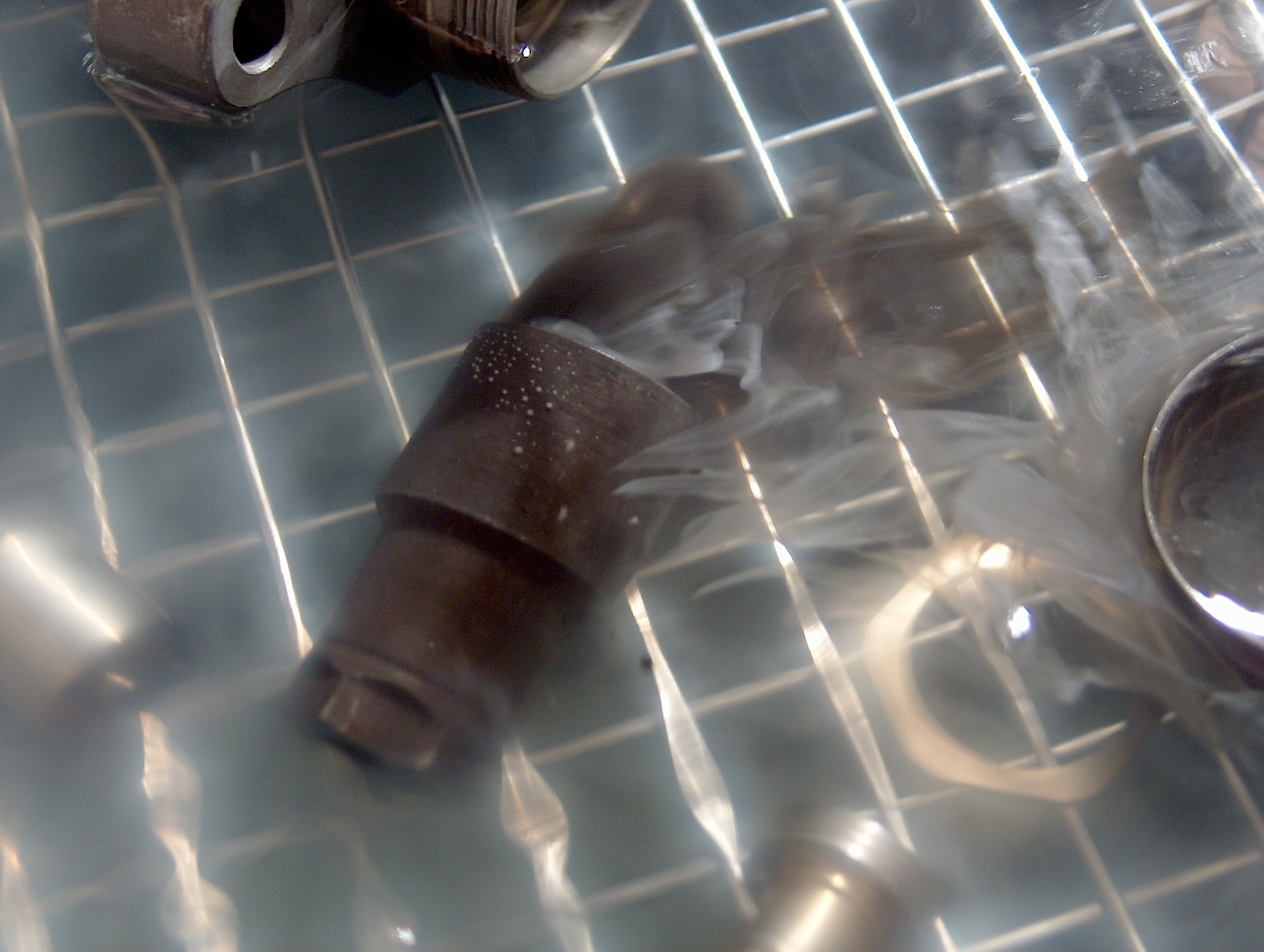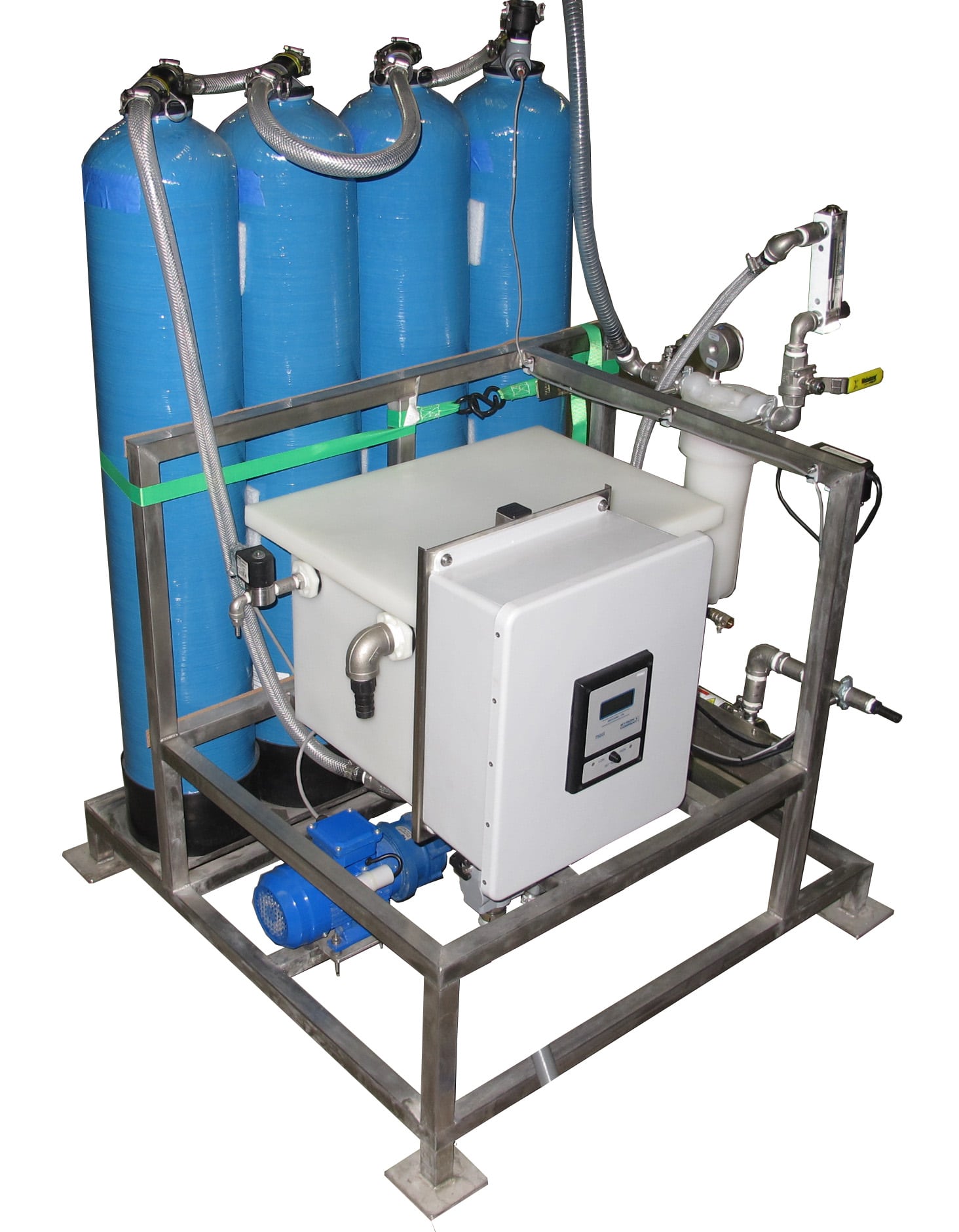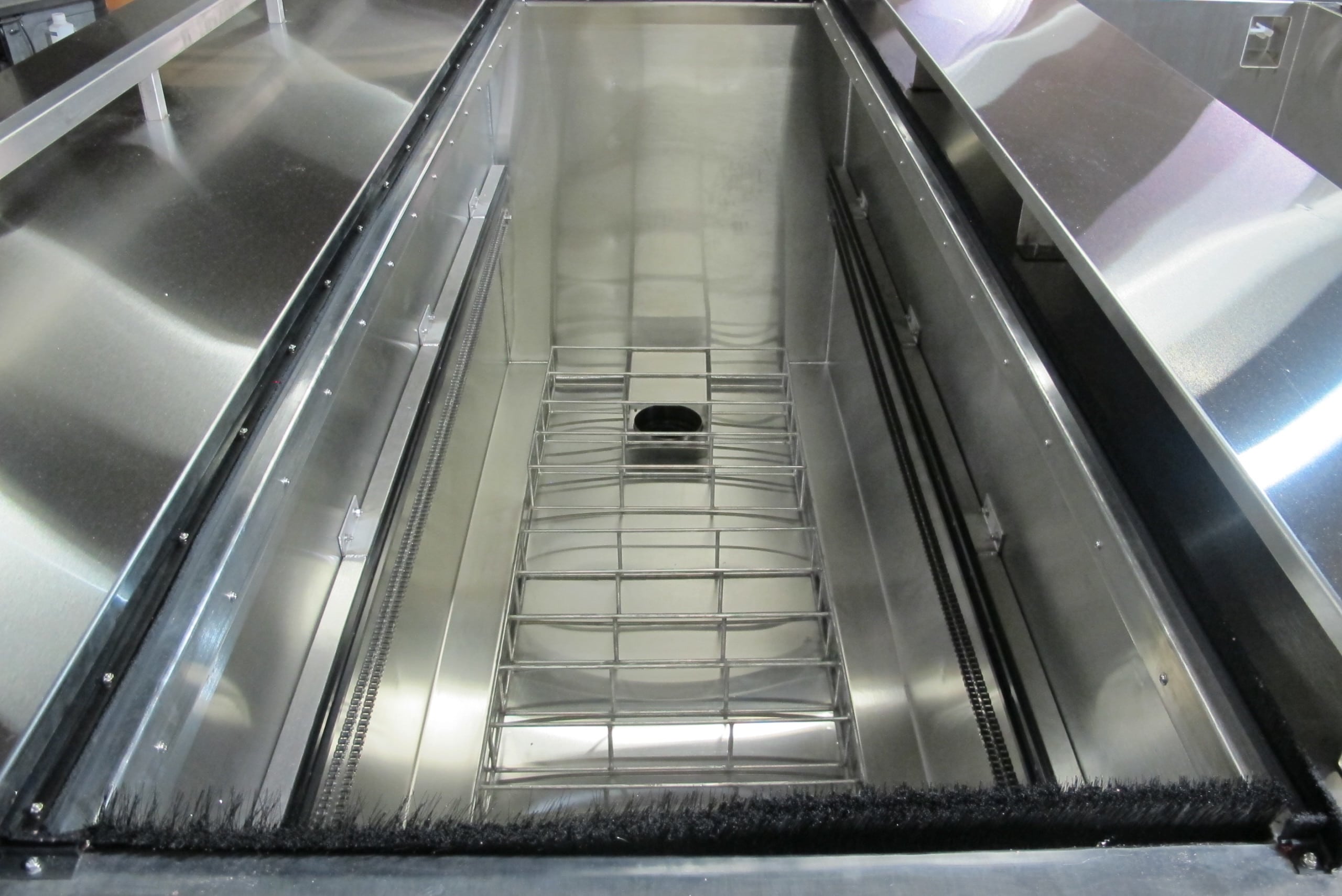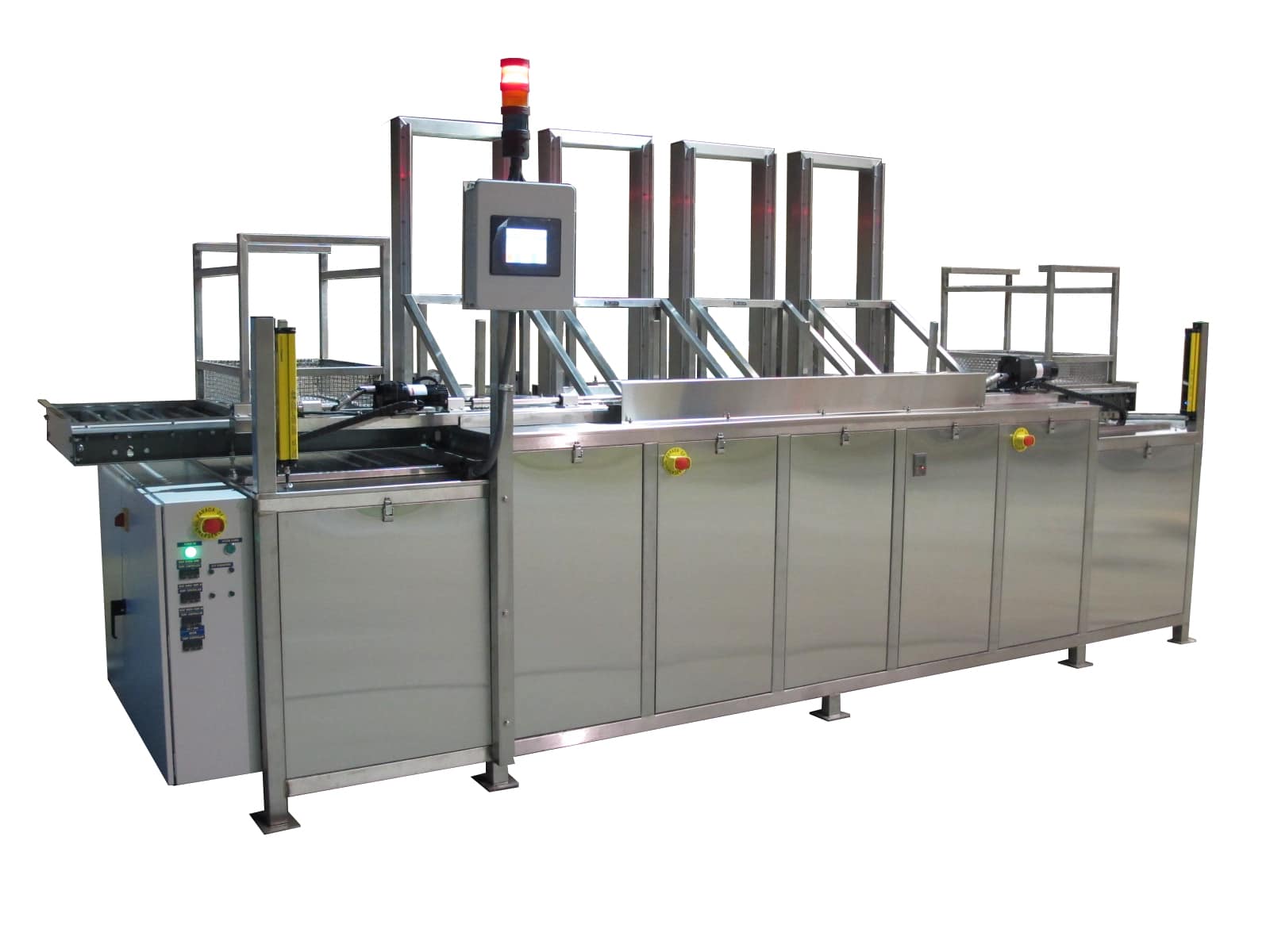The Typical Ultrasonic Cleaning Process Involves 3 Steps
The aqueous ultrasonic cleaning process is very similar to any cleaning process in which aqueous cleaning fluids are use, and include the following characteristics:
- All aqueous ultrasonic cleaning systems require 3 distinct processes; ultrasonic cleaning where contaminants are removed, rinsing where detergents used in the ultrasonic cleaning tank are removed, and drying where rinse water is removed.
- Typically, the overall process requires a number of tanks. Usually a single ultrasonic cleaning tank is needed, 1-3 rinsing tanks are included, and a drying tank. However, each customer need and application is different.
- Parts are transferred from tank-to-tank manually by hand or using an automation system.
- The number of cleaning tanks included depends upon how many different fluids are required, how contaminated the parts are, or the volume of parts which is being cleaned.
- The number of rinsing tanks included depends upon the end cleaning quality desired and how important water consumption is to the customer. The greater the number of rinsing tanks, the less water that will be required to maintain the water quality in the final rinsing tank. Customers not needing zero residue results may get away with as few as 1 rinsing tank.
- The number of drying tanks included will depend upon how fast product must exit the system since the drying process is typically the bottleneck, taking longer than either cleaning or rinsing operations. Compressed air can be used to speed the drying process if needed.

Cleaning Tank Considerations
- An ultrasonic frequency must be selected for the ultrasonic cleaning process than can address the contaminant in question, produce as little noise as possible, and not damage parts being cleaned.
- Zenith’s most common frequency tends to be a combination of simultaneously-operating frequencies which we call CROSSFIRE which has been patented by Zenith (US 5,865,199 and 6,019,852).
- By combining 2 different frequencies, we create a hybrid cleaning action which includes the power of lower frequencies with the penetration and even energy distribution of higher frequencies.
- The most common frequency combinations include 25/40kHz for cleaning heavy objects or those with highly bonded contaminants, 40/80kHz for light part loads removing lightly-bonded contaminants such as oils, greases and coolants, and 80/130khz for cleaning parts which are sensitive to ultrasonic attack such as PC boards, electronics, or computer parts.
- If floating oils are a possibility, a means of removing this oil before parts are lifted through it can be included. This consists of an overflow weir in the tank into which the oils will flow, a separate oil capture tank, oil skimmer, and plumbing designs which will force floating oils out of the processing tank.
- Filtration systems are also typically included to remove particles from the cleaning fluid. If the system is automated, the filter pump is automatically deactivated when the ultrasonics are turned on since fluid turbulence reduces ultrasonic scrubbing action.
- Heating systems and closed-cell-foam insulation are included to elevate and maintain the bath temperatures.


Rinsing Tank Considerations
- If parts need to exit the system with no water spots or residues, deionized water will be required in the rinsing tanks.
- Deionization systems remove impurities from the water that would leave spots on the product, and allow for continuous re-use of the same rinse water. It is a closed-loop system.
- Deionization systems can be provided by Zenith, and are known to require a good deal of maintenance UNLESS the parts are rinsed in tap water before entering the deionized water rinsing tanks.
- Multiple rinse tanks are designed with reverse cascade overflow. Water enters the FINAL rinse tank first and this tank overflows into the first rinse tank. This ensures that the final rinse is as pure as possible while reducing the amount of water used since both tanks share the same water supply.
- The greater the number of cascade rinse tanks included, the less water that will be required to maintain the water quality in the final rinse tank (if using an existing water supply rather than a deionization system)
- In some cases, the rinse tank/s include ultrasonics as well to ensure that detergent residues are removed in detailed areas such as between neighboring laminations on the rods that are used to handle the product.
- In some cases, rinsing is not required. Detergents can be left on the parts and these detergents have rust preventatives in them to prevent steel parts from oxidizing/rusting.

Drying Tank Considerations
- Drying tanks typically include a high-volume blower and a heater to elevate and maintain the air temperature in the tank to the desired level. In some cases, temperatures as high as 250 degrees can be use.
- In some cases, parts can be blown off with compressed air to reduce drying times or remove water between neighboring parts, such as neighboring flat laminations.
- The most effective compressed air blow-off operations are performed by hand since operators can direct flow where needed to remove excess water. Fixed airknives are only partially effective since air flow direction is fixed.
- Blow-off can take place after parts are ejected or before parts enter the drying tank, and automated system can be programmed to alert operators if parts require pre-drying blow-off.
- The drying tank is most commonly the bottleneck in processing speed since drying typically takes longer than cleaning or rinsing processes.
- In some cases, multiple drying tanks are included to eliminate this bottleneck in very high volume cleaning applications.

Most Commonly-purchased Systems
- The most common systems we sell are those tank include 4 or 5 tanks; a single ultrasonic cleaning tank, dual or triple cascading rinse tanks, and a single drying tank.
- For service-applications (not newly manufactured parts) customers commonly purchase only the ultrasonic cleaning tank (since they have rinsing and drying means already). In some cases, a 2-tank system (cleaning and rinsing tanks) or a 3 tank system (cleaning tank, rinsing tank, and drying tank) are normally considered.
- If a closed-loop deionization is being considered and high quality is required, a 5 tank system is recommended with 3 rinsing tanks.
- The first rinsing tank would be a tap water rinse and the 2 final rinse tanks would be deionized water rinsing tanks.
- Automation such as our patented ADVANTAGE or TRANSTAR systems can be added to fully automate the process and can include multi-position load and unload conveyors to permit queuing of multiple baskets
- Automation Systems not only automate transfer but improves cleaning action by adding agitation to all liquid processes.


